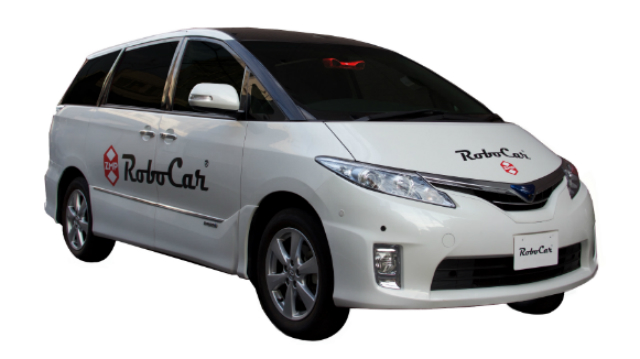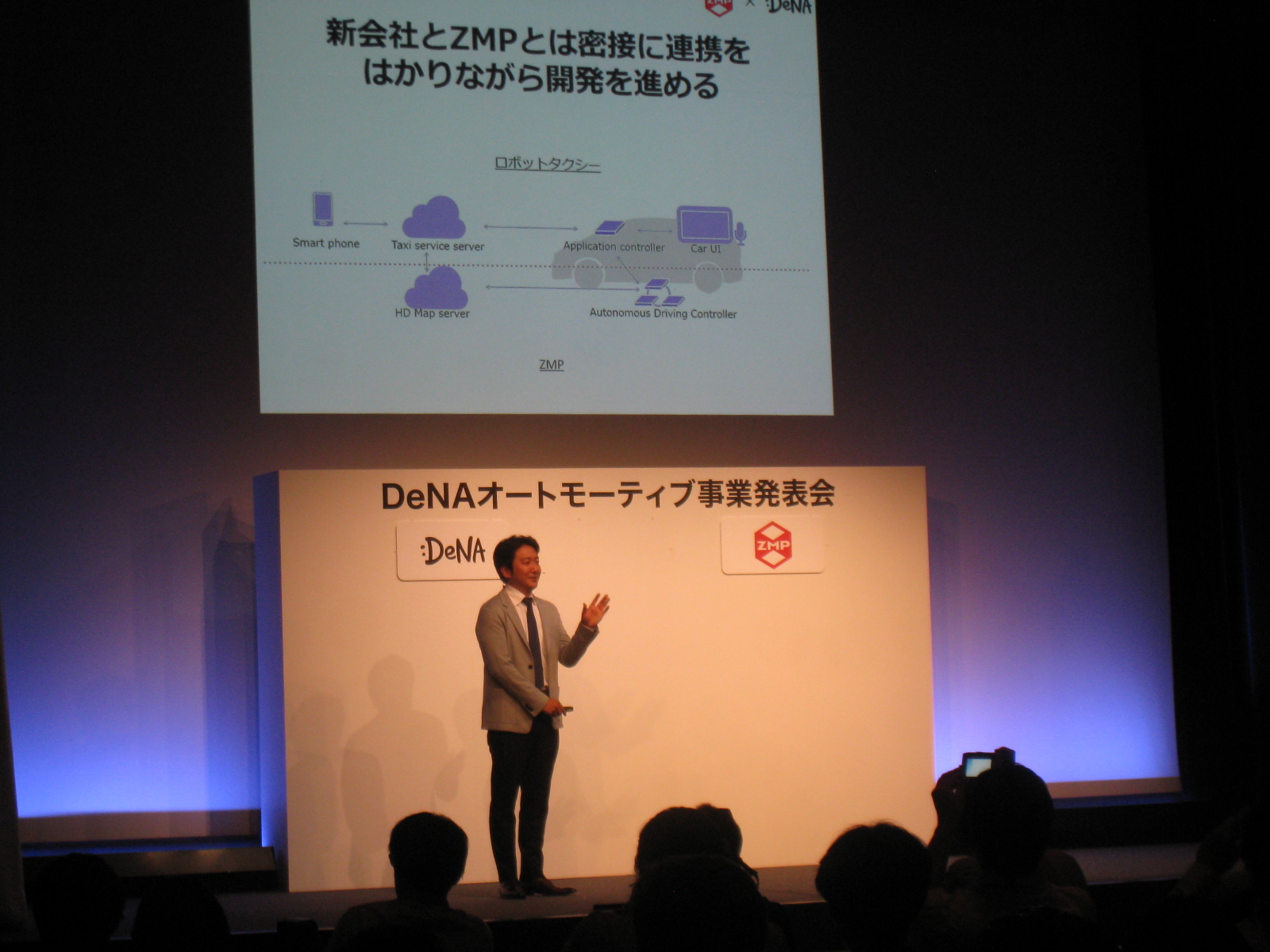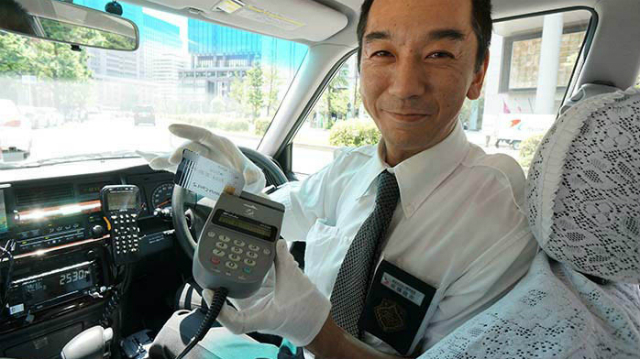By 2020, visitors landing in Tokyo for the Summer Olympics could be greeted by a fleet of self-driving taxis.
At least, that’s the dream of Japanese tech company DeNA, which hopes to have autonomous cars shuttling tourists around the crowded, maze-like streets of that megacity within five years. You probably haven’t heard of DeNA. But it’s big in Japan. It’s a mobile gaming company that recently turned heads in the tech world by scoring a hot deal to bring Nintendo’s fiercely protected intellectual property like Mario and Pokémon to mobile devices. Now the company believes it can leverage its mobile infrastructure savvy to develop the best software needed to summon a fleet of robocars on a smartphone.
So, who exactly is DeNA? And can its driverless autos really give the likes of Google, Uber, and Apple a run for their Silicon Valley money?
Meet DeNA
Though little known in the West outside the gaming industry, DeNA is an Asian powerhouse. In a nation infamous for a chilly startup environment, DeNA — pronounced “D-N-A” — became wildly successful as a mobile game developer, hitting “unicorn” status with a net worth of over $US1 billion.
Why is this a big deal? It’s a topic that’s been analysed to death, but basically, startup culture in Japan isn’t what it’s like in other developed nations, so the place isn’t really churning out success stories like Etsy or Airbnb or Dropbox or Twitter. According to StartupRanking.com, the US has the most startups in the world (4,576) followed by India (1,779). Japan has 122.
But DeNA is one of Japan’s richest, happiest, sparkliest, Lisa Frank-iest unicorns. Some perspective: It owns 12 pro baseball teams. In recent years, the firm has forayed beyond video games into a slew of emerging technologies, from digital payments to gene testing. And next, robo cars.

ZMP’s test car (not final Robot Taxi design). Courtesy: ZMP
DeNA’s autonomous taxis, called “Robot Taxi,” joins players like expertise in buzzworthy hardware to build a car from scratch without the help of carmakers. Google leads the way in information technology, incorporating rich maps that give a bird’s eye view of the vehicle’s surroundings. Uber’s mastered on-demand ridesharing.
And DeNA? The Japanese firm believes autos are reaching a turning point, and that the focus is pivoting from hardware to mobile software — data, apps, user experience, much like smartphones did a decade ago. And one of the main reasons Nintendo picked DeNA from the competition is its decade of experience operating mobile devices and server-side tech for massive user traffic, and commercialising that technology. The company has been leading mobile platforms since 2004 — three years before the iPhone came along.
From Mobile Games to Robo Cars
“Cars today are like feature phones in the early 2000s, and we believe we can help them evolve quicker,” says Tomoyuki Akiyama, DeNA’s global press rep. “The automotive industry is vast, and their focus is finally shifting from hardware to software and [mobile] network. We see a huge opportunity there.”
Indeed, the hardware behind DeNA’s self-driving car isn’t that different from say, Google’s experimental vehicles. The company is partnering with ZMP, a Tokyo robotics startup that’s been developing autonomous vehicle technology since 2008. ZMP says its Robot Taxi uses lidar sensors and image-recognition cameras to measure distances between objects like traffic lights or pedestrians, the same as Google’s cars, using laser beams. ZMP is also toying with millimetre wave radars: mountable radars that gauge how far or close traffic is ahead on the road, nothing out of the ordinary for this kind of tech. ZMP is currently testing self-driving technology on public roads in Aichi prefecture, about a four-hour drive west of Tokyo.

DeNA automotive head Hiroshi Nakajima announcing the Robot Taxi partnership with ZMP in May
Meanwhile, the gaming giant is working to develop the software side — a hailing app and the interface inside the car. DeNA, whose ventures include a wildly popular manga-reading app for comic lovers, boasts that it has a proven track record of commercialising technology to wide audiences via handheld devices. It’s selling the fun behind self-driving cars: Hiroshi Nakajima, head of DeNA’s automotive division and CEO of Robot Taxi, says “you can technically work, [and also] watch movies, sleep, or even drink” while in Robot Taxi.
“If you think of the technologies needed to call [robotic] vehicles in a campus or inner-city environment, routing, scheduling and interface to devices, like the phone, become critical,” says J. Christian Gerdes, a mechanical engineering professor at Stanford. “So it isn’t surprising that new players [like mobile companies like DeNA] could play a key role. I consider automated vehicles to be a big puzzle and applications for hailing and routing are definitely a piece of that puzzle.”
The company’s been running mobile infrastructure for over a decade, and has been overseeing handheld transactions long before Uber.
“Operating a mobile games platform with more than thousand games calls for a robust, server-side infrastructure, that can securely handle millions of users accessing it at the same time,” says Nakajima. “You would also need to design mobile-optimised user experience, and charge the end users for virtual items without troubles. DeNA has all these experiences and they will be definitely useful for our future robot taxi service.”

Beyond the Olympics
Here’s the vision: It’s June 2020. Harried Tokyoites, visiting Olympians, and foreign sightseers alike will all whip out their smartphones and, using a mobile app, summon a ride to their current location in Uber or Lyft-like fashion. Then the fares hop in the humanless cars and cruise the Asian capital. (DeNA eventually wants Robot Taxi in Japan’s rural areas, too.)
The Olympics Games, always sort of like a World’s Fair for the host country, are an ideal chance to show off the brand new smart taxis as a futuristic mode of transportation to the world. (Reminder: Most tourists don’t speak Japanese, and most Tokyo cabbies don’t speak English.) But the company’s goal isn’t just to cater to the 920,000 foreign visitors that are expected to descend on Tokyo in 2020.
Robot Taxi is targeting the professionals who want to work during commute, the tourists flocking to Japan in record numbers and who can’t speak Japanese, and the country’s rapidly ballooning number of seniors who want to maintain their independence. DeNA is also hoping to blur the line between owning a car, renting a car, and using taxis, which is convenient in a densely packed country like Japan. In the future, what will vehicles look like, and how will they function? As more major players enter this market, and the more the technologies overlap — mapping, mobile apps, robotics — the more self-driving cars are poised to become our default mode of transport. Cars become a service and less of an individually owned product.
Ride-sharing has become more popular in Japan, since Uber arrived in Tokyo last year. (Even though Uber met its usual controversy once it tried expanding to other Japanese cities.) Robot Taxi follows a basic ride-sharing model, except for the fact that in the driver’s seat, where there’s usually a chatty driver angling for a five-star rating is, well, no one.
Human or Robot?
Let it be known: The cab service in Japan, like most other customer service there, is phenomenal. There, taxis are spotless, often black chariots with doily-laced seats and automatic doors controlled by white gloved drivers who treat you like royalty. And they’re very considerate: After one sloppy night in Osaka, my cabbie brandished a complimentary can of coffee so I could, uh, stabilise.
And yet, Japanese companies looking to make self-driving cars — or any technology in general — might be armed with a cultural advantage. Rochelle Kopp is a San Francisco-based expert on Japanese businesses and intercultural consultant. She points out that engineers are cheaper to hire in Japan than in Silicon Valley, and the Japanese work ethic is unparalleled (to the point where it can tizzy staff into exhaustion).
“I’ve done a lot of work in the automotive industry, and one thing that’s for sure is that it’s a very complicated environment and ecosystem, with long product life cycles, a huge number of literally moving parts, and lots of sensitivities related to safety,” Kopp says. “I think dealing with all of those is going to be a challenge for any of the companies that are trying to do something different in this field, including Google and Uber and Apple. I know that people love to try to ‘disrupt’ markets, but this is going to be a tough one.”
DeNA wants its Robot Taxis to offer an alternative to those shiny coffee-stocked sedans. But cabs without a human driver may be a deterrent in Japan; the public perceptions of a human-free car could actually be a hurdle for Robot Taxi adoption.

In a 2014 survey conducted by the University of Michigan’s Transportation Research Institute, it was found that among China, India, Japan, the US, the UK, and Australia, public perception of self-driving cars was positive in all surveyed nations except Japan, which displayed neutral opinions, according to the study. Interestingly, nearly 50% of respondents in each China and India had “very positive” feelings about autonomous vehicles, while Japan only racked up 10% in the same category. (The US measured in at 22%.)
I love the ultra-polite, snappily dressed Japanese taxi drivers shoving canned coffee in my face in the midst of my whiskey-fuelled stupor. That’s great service, and the kind of subtle touches that mean so much more coming from a person. And I’m not alone in that sentiment.
“I’m kind of old-fashioned, perhaps, but I think that Japanese cab drivers are fabulous,” Kopp says, “and can’t imagine a robot being better.”
Images via (in descending order): ZMP, DeNA, Wikimedia Commons, Japan National Tourism Organisation
Top illustration by Jim Cooke
